I was surprised to learn during ground school that the 737NG airplanes are limited to a maximum of 340 knots and .82 Mach. The max speed of the MD80 I recently left is slightly higher at 340 knots and Mach .84. The MD80 could easily reach climb and descent speeds of 340 knots while operating at lower altitudes, but the extra wind noise at such speeds was a significant deterrent, so we rarely flew near the limits unless behind schedule or working the last leg home.
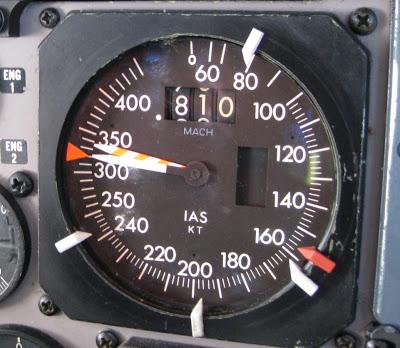
MD82 airspeed indicator near the limits.
The maximum end of the Mach spectrum was much harder to attain. The reason for this basically came down to wing design. The MD80 wing, essentially the same wing as the original DC-9 designed back in the early 1960's, was not designed for speeds above about Mach .77. Don't get me wrong, the airplane is capable of .84, but only with great effort and expense. The extra fuel burn required to exceed normal cruise Mach could easily jeopardize arriving at your destination with the required fuel reserves...if at all. Older models of the 737 have a slower wing as well, but the next generation airplanes have an all new design that makes higher speeds and altitudes both possible and financially feasible.What is mountain wave?
Mountain waves are oscillations found on the lee side (downwind) of a mountain caused by a disruption of horizontal winds. As wind blows toward a mountain, it often produces a series of oscillation as it climbs then descends on the other side. Each subsequent oscillation will have lower amplitude than the one before until the oscillations dissipate altogether, sometimes hundreds of miles past the terrain that got the event started in the first place.
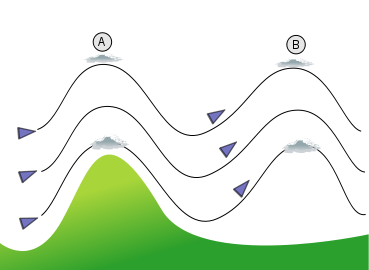
For an aircraft flying downwind of a mountain range, an encounter with mountain wave may result in significant fluctuations in both airspeed and altitude. With the autopilot engaged, the most obvious indication of mountain wave is an increase and or decrease in airspeed as the aircraft flies through each oscillation.
…and the coffin corner?
The coffin corner is the altitude at or near which a fixed-wing aircraft's stall speed is equal to the critical Mach number. At this altitude it can be quite difficult to keep the airplane in stable flight. Since the stall speed is the minimum speed required to maintain level flight, any reduction in speed will cause the airplane to stall and lose altitude. Since the critical Mach number is the maximum speed at which air can travel over the wings without losing lift due to flow separation and shock waves, any increase in speed will cause the airplane to lose lift, or to pitch heavily nose-down, and lose altitude. The "corner" refers to the triangular shape at the top right of a flight envelope chart where the stall speed and critical Mach number lines come together. (1)
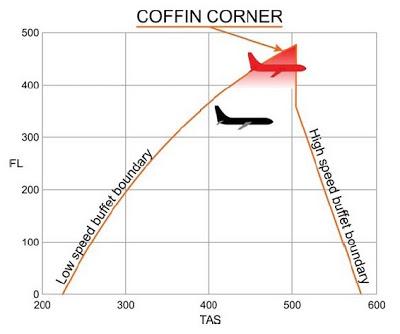
We were in smooth air with the seat-belt sign off when the flight attendant called to inform us that our crew meals were ready. As the captain stepped back to open the cockpit door, I felt the aircraft nose over slightly then noticed the airspeed increasing as the autopilot attempted to maintain a constant altitude. We had entered a mountain wave that would increase then decrease our speed by almost 15 knots in both directions. With speed rapidly approaching the Mach limit, I reached for the speed brake lever and raised the flight spoilers to keep from over-speeding the airplane.
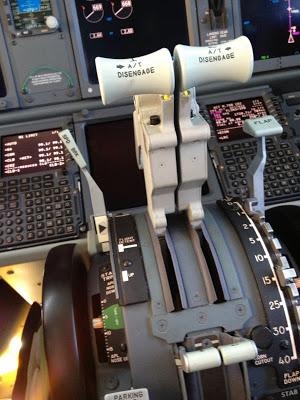
Boeing 737 throttle quadrant...that's the spoiler lever on the left.
Another option would have been to manually reduce thrust on the engines instead of raising the spoilers, but the auto-throttles had already reduced thrust as low as I wanted it to go and with spool up time from idle to maximum thrust near 7 seconds, the spoilers seemed like the smarter option. Our speed increased to just shy of .82 before it slipped off to an equally uncomfortable speed on the slow side of the airspeed indicator. This little dance between too fast and too slow went on for almost 100 miles before we exited the mountain wave and found ourselves in more stable air.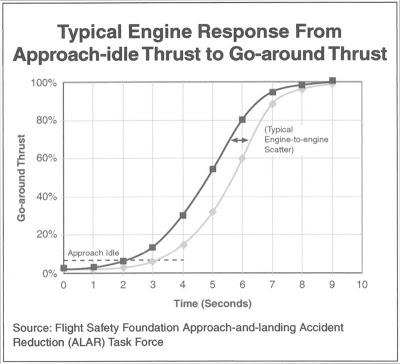
At FL380 (38,000 ft), the distance between max speed and stick shaker was barely more than the fluctuations we were experiencing. I found the entire experience to be more than a little unnerving. Plus, my dinner was cold by the time I got around to feeling hungry again.
I was too busy to snap any pictures during that event, but took the pictures below a few days later. The airspeed indicator is on the left side of the screen...take note of the indicated speed…240 knots, and the Mach, just over .78. (The magenta number on top of the speed tape is the commanded Mach and the white number below is the actual speed.) Also, make note of the spread between too fast and too slow. The "coffin corner" is visually depicted on the on the PFD. The higher and heavier the aircraft operates, the narrower the spread between the upper and lower limits of speed. The red and black squares(they actually look yellow in the picture, but trust me…they're red) indicate speed above VMo (.82) while the yellow "hook" below indicates the minimum maneuvering speed.
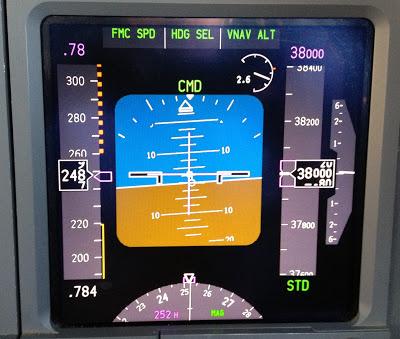
Boeing 737 PFD...airspeed tape on the left. (Flight Level 380)
To illustrate the effect of taking the same aircraft two thousand feet higher, take a look at the picture below. The yellow hook above and below the speed respectively indicate maximum and minimum maneuvering speed. We only accepted that altitude for about five minutes to accommodate a request from ATC. With only five knots between the min and max speeds, FL400 was not an altitude we wanted to occupy for long and would almost certainly have resulted in a slight over-speed had we encountered another mountain wave. Later on after burning off additional fuel or on another flight with a lighter payload, the same altitude would have been a safe place to operate, but on this flight we were too heavy to maintain such a high altitude.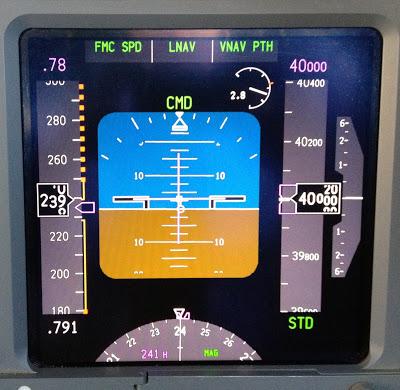
FL400...40,000 feet.
Lesson learned…while the airplane is rated to fly as fast as .82, there’s a very good reason we don’t fly it that fast.
